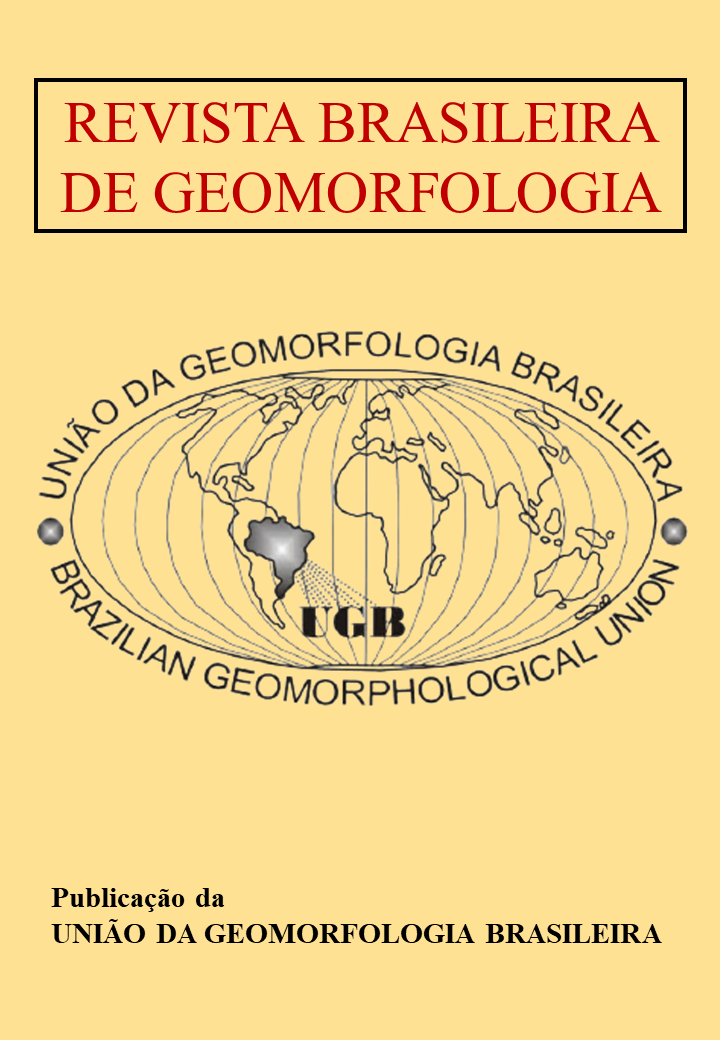Erosion processes and dynamics of two gullies developed in residual soil on a steep slope (Espírito Santo State, Brazil)
DOI:
https://doi.org/10.20502/rbgeomorfologia.v25i1.2489Keywords:
Water erosion, Terracettes, Soil conservation, Hills, GneissesAbstract
The aim of this work was to try to understand the causes and processes that took to the formation of two gullies on a slope located in the municipality of Alegre, State of Espírito Santo (Brazil). The study involved the geological, pedological and mineralogical characterization, multitemporal analysis of remote sensing images, morphometric and morphological analysis of the gullies, and the description and identification of field features indicative of gullies development processes. The results show that the gullies are installed on a slope with a heterogeneous distribution of horizons and soil types, which are developed on gneissic rock on a steep slope. The soil loss rate was estimated at 198 m3.year-1 for the years 2007 to 2021. The origin of the gullies appears to be related to the rupture of terraces, due to intensive cattle farming. Once installed, the gullies evolved quickly, with short periods of stability. Mass movements and the presence of traction cracks in the soil contributed to the gully expansion process. The study exemplifies a typical case of soil degradation when management practices are not adopted.
Downloads
Downloads
Published
How to Cite
Issue
Section
License

This work is licensed under a Creative Commons Attribution-NonCommercial 4.0 International License.
Author (s) retain copyright and grant the journal right of first publication with the work simultaneously licensed under the Creative Commons Attribution License that allows sharing the work with recognition of its initial publication in this journal.








